Log home construction has come a long way since our forefathers’ day. Many of them built a house or cabin with only an axe accompanied by an adze. Later, crosscut saws were used when they were available. As time progressed, logs were processed at simple sawmills. Today, huge mills operate like factories in turning out finished logs, log siding, corner systems, and log trim.
We have more choices today in log home styles and construction methods. There’s traditional round and square logs, timber frame, and post and beam. A construction method many people are not familiar with is the use of log siding to simulate the full log look without the high price.
Although the use of log siding for cabins and houses is not new, many prospective homeowners do not know about its many benefits. Among them are faster and easier construction at much less expense. This construction method is worth pursuing if you plan to build a log home.
The Log Siding Concept and Its Benefits
The use of wood log siding has revolutionized log cabin and log home construction. Homeowners can purchase this ready-to-install material directly from the supplier. They do not have to remove bark from logs, shape them to size, or saw them to the correct dimensions.
The mill does all the work for you by removing the center section from logs and creating two D-shaped log siding pieces. Pine and cedar siding are available in varying widths, thicknesses, and lengths to meet your building plans. As a result, the significant feature of log siding is its tongue and groove/end-matching design that allows end-butting anywhere between wall framing.
Log siding is attached to conventional wall framing with galvanized screws to stand up to the elements. It is applied to the OSB board on the outside and the wall framing on the inside. Insulation, wiring, and plumbing are placed in the walls like in conventional housing construction. Another benefit that adds convenience and saves time is purchasing siding in a pre-finished condition. Siding is more popular in an unfinished condition.
How Corners Are Assembled
The log siding construction method makes creating corners an easy task. There is no sawing, notching, or chiseling logs to make corner joints. The corners are installed first followed by the log trim and then the pine or cedar log siding. You can select from several types of corner systems that are fashioned at the mill, including:
- Butt-n-Pass D Style is less popular today but available
- Butt-n-Pass Double-D corners are the most popular
- Saddle Notch is also a favorite style of corner
- Vertical Style consists of a single vertical log
All these corner styles are easy to install with simple tools and fasteners. Each one can be matched with the size/profile of log siding you select.
Although the use of log siding for cabins and houses is not new, many prospective homeowners do not know about its many benefits.
Adding the Log Trim Is Part of Log Home Construction
Once the corner system is secured on all corners of the home, log trim is placed around doors and windows with long galvanized screws. Log trim is available to match the size/profile of log siding you select. The common sizes include:
- Firstly, 2×6 D-trim or 3×4 D-trim for quarter log siding
- 3×6 D-trim or 4×4 D-trim for half log siding
- 4×4 D-trim or 4×6 D-trim for premier log siding
Each piece of log trim is milled to precise specifications. Log siding is butted up against the window and door trim, screwed into place, and caulked. Comparatively, this combination provides a traditional log cabin or log home look you will be proud of.
Tongue and Groove Pine Flooring
Tongue and groove pine flooring is also nothing new, but flooring with the end-matching system is a modern wood-style marvel. Each piece fits snugly together just like the tongue and groove log siding. The secret is the strong tongue and groove feature that appears on both sides and both ends of each piece of flooring.
It’s easy to tap the pieces together with a mallet and secure them to the subfloor with a nail gun. Knotty pine is easy to sand and clean after sanding. It does not have open pores like oak that can hold sanding dust. Pine is also simple to stain and finish with a clear coat. Here’s how to install pine flooring yourself.
Caulking, Staining, and Finishing in Log Home Construction
The new caulking, staining, and finishing products are superior to those of just a few years ago. All three adhere to pine or cedar wood better and the clear finish does not yellow with age. Comparatively, our brand recommendations for these three exterior applications are:
Caulking: Log Builder, Log Jam, Conceal, Energy Seal, and Perma-Chink
Staining: Sikkens, WeatherSeal, Sashco, PPG ProLuxe, Perma-Chink
Clear Finish: Symphony by Sashco, Lifeline Acrylic Clear by Perma-Chink, Sure Shine by Perma-Chink (all are water-based)
As a result, take advantage of these newer construction methods and your log home will look great for generations to come.


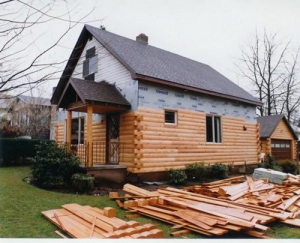
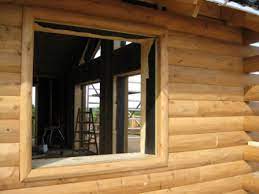
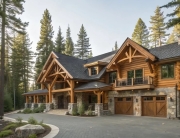
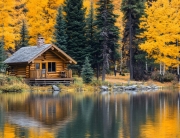
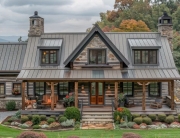
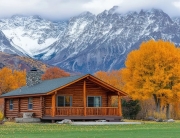
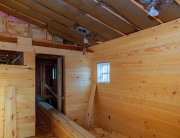
Recent Comments